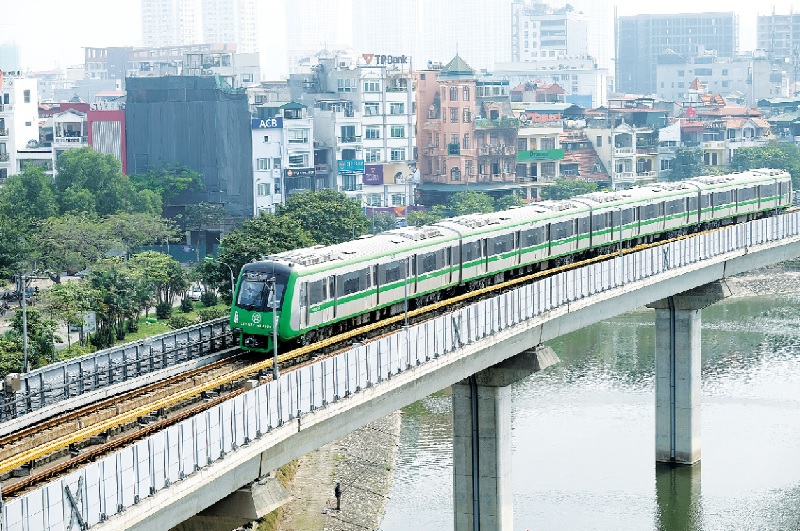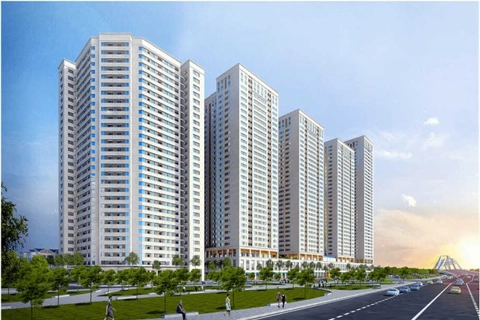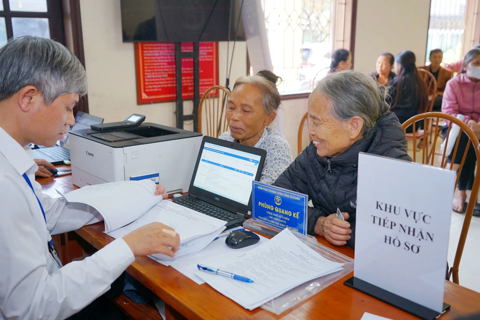Draft amended Capital Law to accelerate urban railway projects
The draft law aims to redirect investment from being channeled mainly into housing and commercial center development projects to infrastructure projects such as urban railways.
The draft amended Capital Law aims to provide a policy solution to address longstanding challenges and obstacles in the execution of urban railway projects.
| The Cat Linh - Ha Dong urban railway. Photo: Pham Hung/The Hanoi Times |
In recent years, the rapid urbanization of Hanoi has resulted in an overload of infrastructure, particularly in the transportation sector. This has created a pressing need to introduce new forms of public transportation to address the growing demands of the population. Among these alternatives, urban railways have emerged as a promising solution, showcasing proven effectiveness in various countries.
The imperative to establish an urban railway system to alleviate traffic congestion in the capital has become a focal point in major planning projects for Hanoi. Specifically, the revised draft of the capital law is anticipated to address planning challenges, progressively solidifying urban railway initiatives aimed at tackling the city's traffic congestion issues.
As outlined in Decision No.519/QD-TTg dated March 31, 2016, which approved Hanoi's Transport Planning up to 2030, with a vision to 2050, the city will build nine urban railway lines and a network of satellite towns connected by railway lines totaling 417.8km. This includes 342.2km of elevated track and 75.6km of underground track.
To date, however, only the urban railway No. 2A (Cat Linh - Ha Dong), with a total length of 14km, has been put into operation. The Nhon - Hanoi Station urban railway project, spanning 12.5km with 8 elevated stations and 4 underground stations, is underway, with the elevated section (Nhon - Cau Giay) scheduled for trial run in December 2023 and official operation expected on April 30, 2024.
Le Trung Hieu, Deputy Head of the Hanoi Metropolitan Railway Management Board (MRB), emphasized the need to adapt planning to the capital's evolving development practices.
"Over the next two decades, Hanoi faces the daunting task of completing almost 400km of the remaining urban railways. This is a major challenge that requires thorough research, construction efforts, and the formulation of investment models for developing new urban railway projects," said Hieu.
The Government's report to the National Assembly underscores the substantial investment required for Hanoi's urban railway projects, estimated at over VND39.5 trillion (US$1.63 billion) by 2023 for four projects and approximately VND321.4 trillion ($13.31 billion) by 2045 for the remaining urban railway lines based on Decision 519.
Breakthrough measures required
Professor Dr. Hoang Van Cuong, Vice Rector of the National Economics University, during a recent discussion session at the National Assembly, highlighted the need to consider solutions for attracting investment capital, especially for significant urban railway mega-projects.
He noted that Capital Planning emphasizes the development of connecting infrastructure, with a specific focus on the transport infrastructure system linking urban railways.
Meanwhile, Luu Quang Huy, Director of the Hanoi Urban Planning Institute, suggested that the General Planning for the Capital's construction until 2030, with a vision to 2050, and Planning 519 have outlined a comprehensive urban railway system.
In the project to modify the General Planning for the Capital, the urban railway system, which now consists, is essentially built upon previously approved plans and current traffic requirements, he noted.
In particular, the adjustments include the removal of the Xuan Dinh - Ha Dong section from Line 6 (part of the existing national railway built with State funds), the extension of the Xuan Dinh section to connect with Line 8 (towards Ring Road No.3), and the transfer between the Ha Dong - Ngoc Hoi section with Line 7.
Line 7 will be extended with the Ha Dong - Ngoc Hoi section, while Line 8 is planned to be a ring metro.
The construction of Line 9 is also planned, which will connect Ngoc Hoi station Ngoc Hoi Station with Thuong Tin, the Phu Xuyen satellite urban area, and the planned area of the second airport in the Capital Region.
Line 10 is also an additional route based on the monorail M3 route, connecting from Me Linh District to Duong Xa (Gia Lam).
In addition to the 10 urban railway lines, there will be an elevated monorail system along both sides of the Red River, designed to combine tourism and scenic views, as well as lines in the downtown area. Additionally, an underground railway system within the inner city will be aligned with the public TOD.
The draft of the amended Capital Law dedicates provisions to the application of the TOD project along urban railways, which does not extend to other modes of transportation.
According to transport experts, this regulation is in line with the capital's development needs and the intricate nature of urban railway projects, which require a specific mechanism.
By comprehensively regulating TOD (Transit-Oriented Development) projects, the draft law aims to redirect investment from being channeled mainly into housing and commercial center development projects, which generate higher profits, to infrastructure projects such as urban railways.
Moreover, the policy solutions outlined in the draft amended Capital Law for implementing urban railway TOD projects aim to address the challenges of utilizing residential land along railway lines, as well as underground and elevated spaces at stations.












